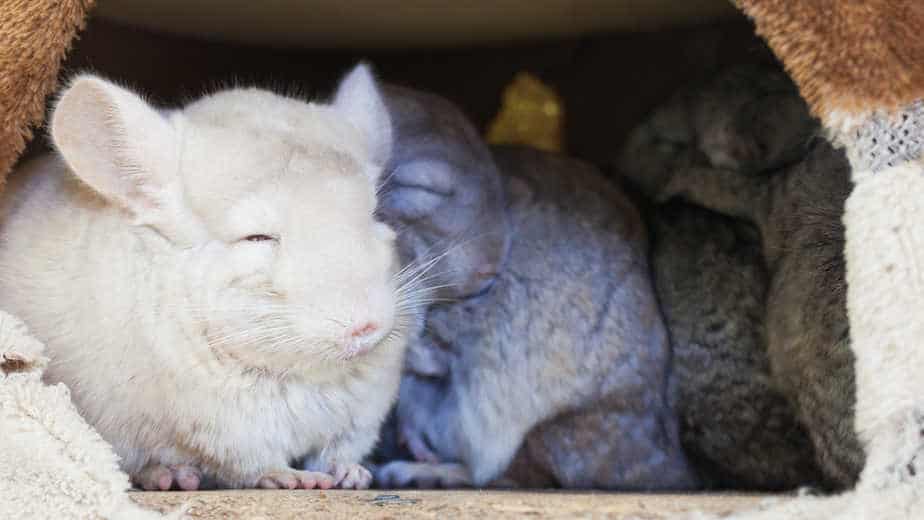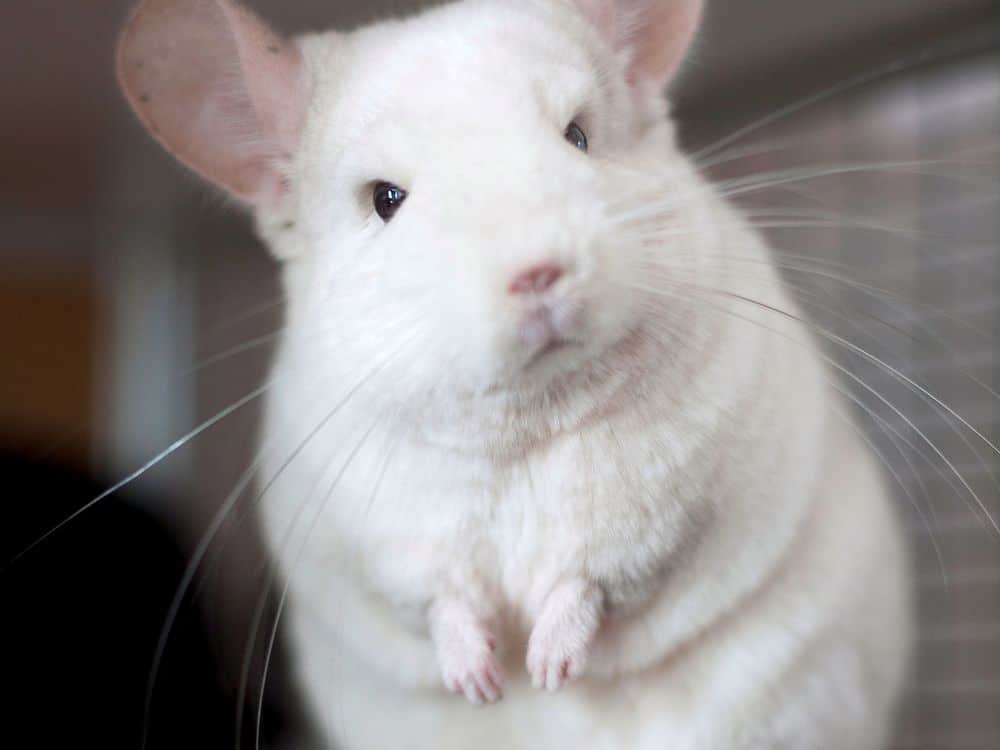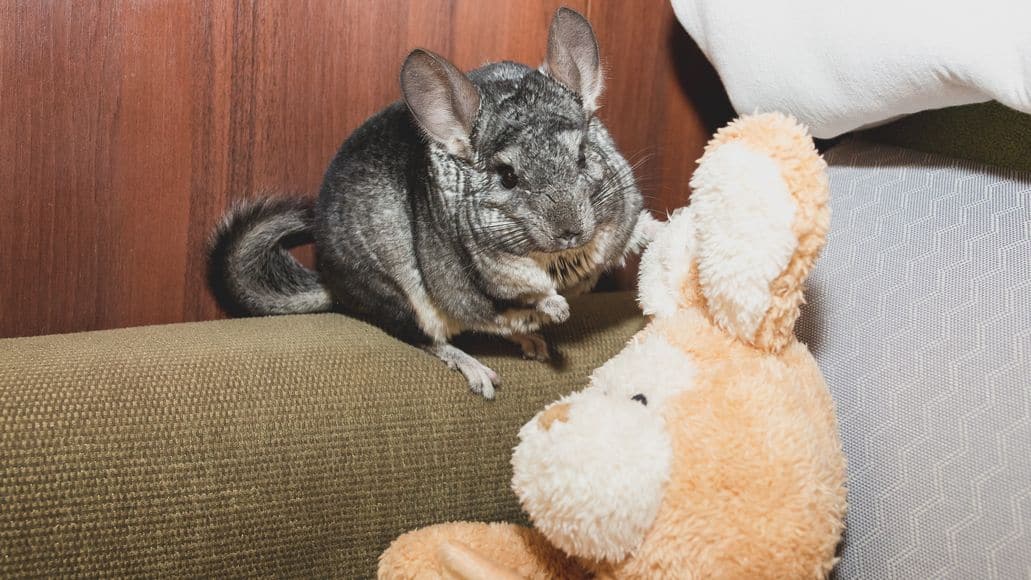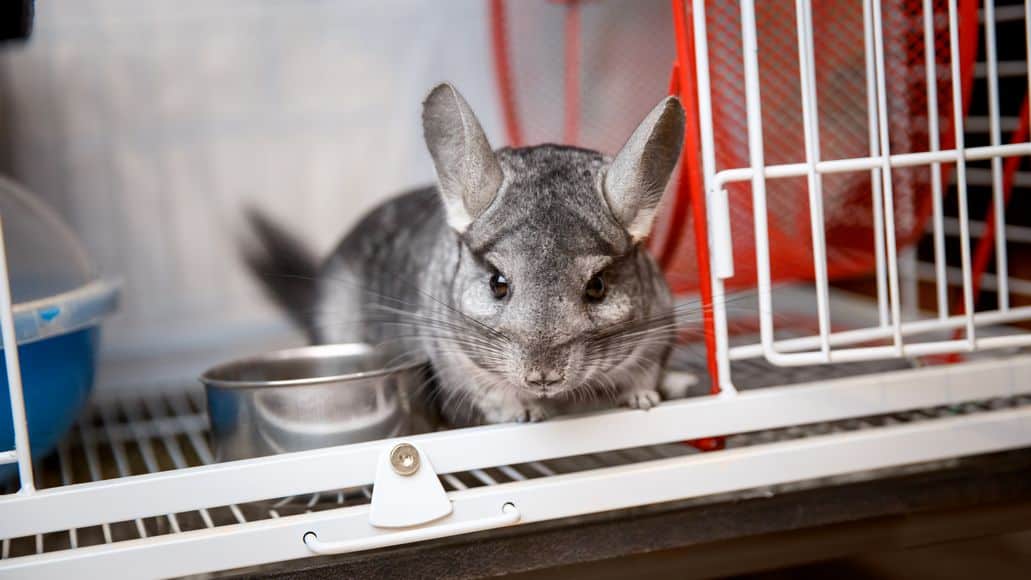
It turns out you can.
They give you clues constantly, through the sounds they make and the body language they exhibit.
All chinchillas are different and they love to show off their personality in different ways. But their body language is key.
Understanding what their movements and positions are telling you is the key to receiving the message they are trying to relay and being able to respond accordingly.
If you know what they want and need, you can always be sure they are happy and healthy in your care.
Keep reading to learn everything you need to know about chinchilla body language.
Contents
Understanding Chinchilla Body Language
Understanding your chinchilla’s body language will ultimately allow you to understand how to take care of your chinchilla and how to adjust, if need be, throughout your journey as a chin owner.
That’s why I wanted to throw together this brief post discussing how to recognize and interpret a chinchilla’s body language.
The hope is that the more you know, the better suited you are going to be to take care of your chinchilla and build a lasting bond.

A chinchilla’s body language is critical to understand for a variety of reasons.
Most importantly, it is going to allow you to understand what message they are trying to relay to you.
While some body language is not as important as others, it is an advantage and part of being an ethical chinchilla owner, to understand body language that can indicate fear or another problem like illness.
This can help you determine when to render care or call a vet. Additionally, it can help you recognize other issues you can remedy immediately, such as heat stroke or an overheating chinchilla.
It is also nice just to know when your chinchilla is happy and healthy.
With this being the case, let’s move into some of the vital signs you can look for you, so you can communicate with your chinchilla like a pro.
Key Chinchilla Body Language
My chinchilla will display her body language in a variety of ways.
To kick start things, I want to only cover physical postures and movement, or body language that involves some form of their body doing something out of the ordinary.
We will cover some common chinchilla sounds further down in this guide.
I will break down the body language postures with a short name for the position they get in and then explain each one in-depth.
The Stand-Up And Stand Still Movement

This body posture from a chinchilla can mean a variety of things. The overall consensus is that is indicates alertness and curiosity.
This posture can also quickly change to a fear-based position (more on this below).
For the most part, my chinchilla will display this body language when something new is entering her environment or when she hears an unfamiliar sound.
She will stand up straight, almost curl her front feet close to her chest, and just look out as if she is scouting the area.
If this happens, it is nothing to be alarmed about. It does not indicate anything that involves you needing to comfort or help your chinchilla with.
Lying On All Fours With Ears Down
This is the classic sleeping posture. If you look at your chinchilla long enough when it is in this position, you will catch it beginning to doze off.
Most frequently, my chinchilla will do this just outside her nest/hiding box or in her hammock. I have never witnessed this posture when she is out and about and wide awake.
A problem with this body posture from your chinchilla is that it can also indicate illness or overheating.
If your chinchilla starts to put itself into this physical position, with its ears down, during times when it usually wouldn’t, or it is not getting lively at any point during a day, it is important you double-check that your chin is not sick.
This is even more the case if it is lying in an unusual posture. For example, if you see your chinchilla laying on side and not moving.
If you cannot see any physical signs of harm and know for sure that the room your chinchilla is in is at ideal temperatures, it may be a good idea to check other indicators of illness.
This can include checking that it is still eating and consuming water. You should also check that it is still pooping normal poops and at the average frequency.
If you remain stumped at what may be going on, be sure to contact a vet and get your chinchilla checked out.
A sick or stressed chinchilla can escalate quickly, so it is always better to be safe than sorry in these situations. Your chin may even have coronavirus, or some other disease it can pass on to you.
Hopping And Jumping For Joy

This body language and personality being displayed from a chinchilla indicates exactly what you think it would suggest: happiness, and that it is in the mood to play.
Typically, this is an excellent time to get your chinchilla out of the cage for some bonding time or even one of its scheduled dust baths.
When this body language is taking place, enjoy it. It is the typical behavior of a happy chinchilla, and what you can expect from your pet once it has warmed up to you. There is even a name for this chinchilla behavior: popcorning. And it dos describe it perfectly!
Sitting Back And Watching From A Distance
This body language is likely what you are going to experience during the first few weeks of owning your chinchilla, while it gets used to you and your home. It takes time for a chinchilla to learn to like you.
It is exactly what happened to me with my chinchilla as well. I know it is exciting, especially in the beginning, to hold your chinchilla. But it is not likely you will be able to do this for quite some time. It is the main reason chinchillas are not ideal for beginning pet owners.
When your chinchilla is sitting back in one corner of the cage and acting scared, it likely means nothing more than that it is not quite sure about you or the situation yet.
Do not worry about it and allow the trust and bond to grow. Do not force any interactions, and eventually, this behavior will end.
I have two other posts that I recommend you check out that can help you dramatically with this situation.
First, check out my post about how to get your chinchilla to enjoy being held here. Additionally, learn how to get your chinchilla in and out of the cage by reading my other post here. I also have an article on taming a chinchilla that might help.
Sounds And Vocalizations Of Chinchillas

Sounds and vocal cues from your chinchilla can also mean a variety of things.
To save some time for you, I recommend you check out my post about a chinchilla barking and my post about other chinchilla sounds, which you can find here.
It will get you somewhat up to speed about all the different sounds your chinchilla may make to indicate different messages to you or even to another chinchilla.
Chinchillas Body Language When Scared
We touched on this briefly a moment ago, but I want to make sure I re-emphasize the importance.
If your chinchilla is displaying body language that indicates fear, do not force it to do anything that it does not seem comfortable with.
This is only going to weaken the bond and the trust the two of you have.
It can also result in your chinchilla running away from you and hiding. If that happens, read our article on how to get a chinchilla out of hiding.
But better to avoid the problem from the beginning and don’t force your pet into uncomfortable situations.
Instead, try taking a step back and simply pet your chinchilla in the cage or talk to it in a calm demeanor.
It is trying to tell you it is scared. If you pick up on that body language (and hopefully you do), make sure to respect the message for the bond to grow.
Some patience with a chinchilla in the initial days is going to go a long way in the future. Trust me, I went through the same process.
Chinchillas Body Language: Final Thoughts
The great news is that the faster you learn your chinchilla’s body language, the quicker the bond is going to grow.
It is also going to make you much more capable of raising your chinchilla with ease, if you can understand what it is trying to tell you.
The more time you spend around it or even getting it out of the cage, the easier it is ultimately going to become.
Keep at it, and you will understand your chinchilla’s body language in no time. Chili and I certainly wish you the best of luck with the journey you have ahead of you.
Share your thoughts.
Do you have any additional recommendations you can share with other readers, to help them understand a chinchilla’s body language even further?
Does your chinchilla do anything different or show any other kinds of body language not mentioned thus far in this post?
Be sure to share those thoughts, stories, and concerns by dropping a comment below.
As always, Chili and I appreciate you stopping by and reading today, and we will see you again next time.
Leave a Reply